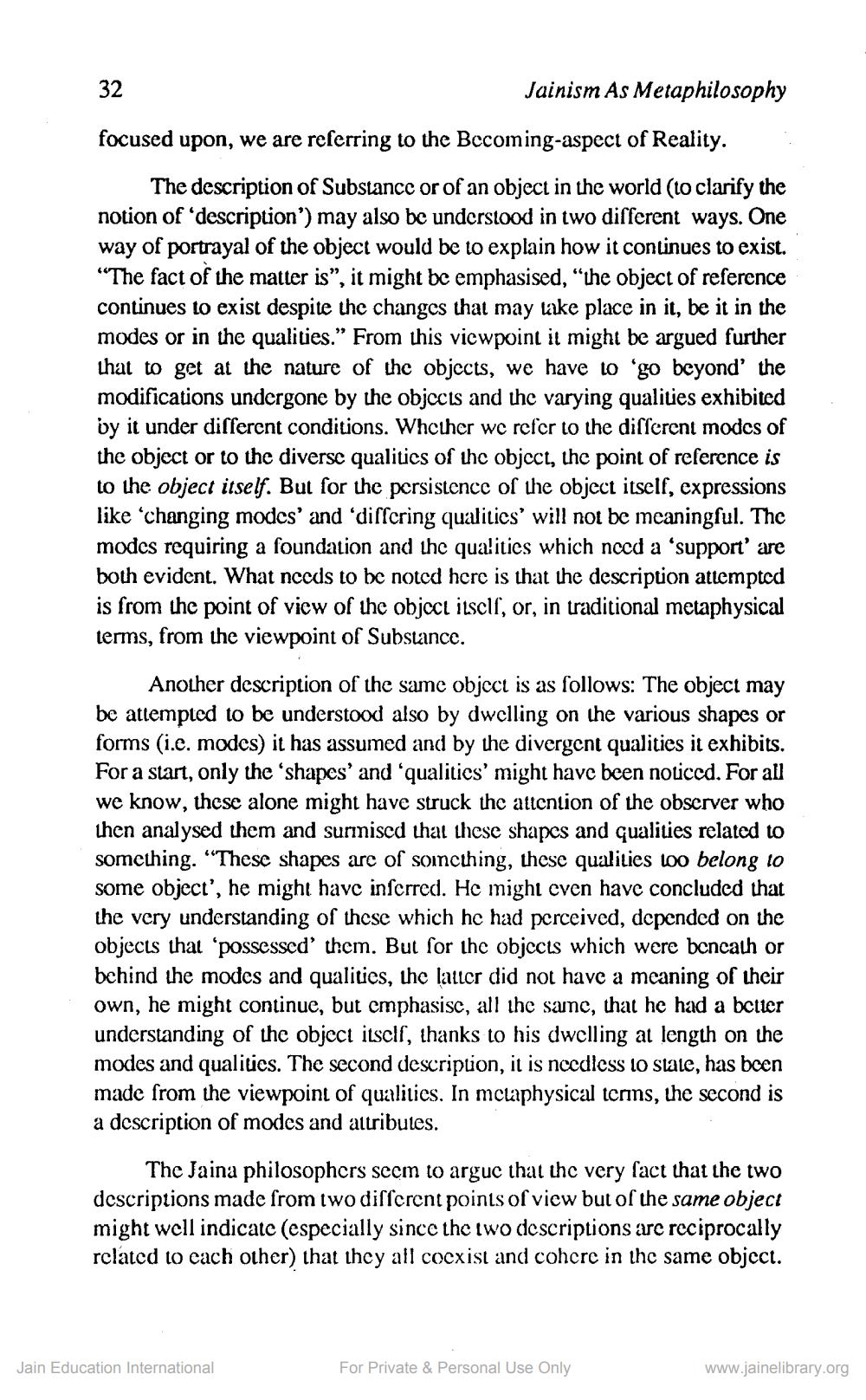________________
Jainism As Metaphilosophy focused upon, we are referring to the Becoming-aspect of Reality.
The description of Substance or of an object in the world (to clarify the notion of 'description') may also be understood in two different ways. One way of portrayal of the object would be to explain how it continues to exist. "The fact of the matter is”, it might be emphasised, "the object of reference continues to exist despite the changes that may take place in it, be it in the modes or in the qualities." From this viewpoint it might be argued further that to get at the nature of the objects, we have to go beyond the modifications undergone by the objects and the varying qualities exhibited by it under different conditions. Whcther we refer to the different modes of the object or to the diverse qualitics of the objcct, the point of reference is to the object itself. But for the persistence of the object itself, expressions like 'changing modes' and 'differing qualitics' will not be meaningful. The mode
des requiring a foundation and the qualities which need a 'support' are both evident. What nccds to be noted here is that the description attempted is from the point of vicw of the object ilsclf, or, in traditional metaphysical terms, from the viewpoint of Substance.
Another description of the same object is as follows: The object may be attempted to be understood also by dwelling on the various shapes or forms (i.e. modes) it has assumed and by the divergent qualities it exhibits. For a start, only the 'shapes' and 'qualitics' might have been noticed. For all we know, these alone might have struck the attention of the observer who then analysed them and surmised that these shapes and qualities related to something. "These shapes are of soincthing, these qualities to belong to some object', he might have inscrred. He might cven have concluded that the very understanding of these which he had perceived, depended on the objects that 'possessed' them. But for the objects which were bencath or behind the modes and qualities, the latter did not have a meaning of their own, he might continue, but cmphasisc, all the same, that he had a better understanding of the object itself, thanks to his dwelling at length on the modes and qualities. The second description, it is needless to stale, has been made from the viewpoint of qualities. In mclaphysical terms, the second is a description of modes and attributes.
The Jaina philosophers seem to arguc that the very fact that the two descriptions made from two different points of view but of the same object might well indicate (especially since the two descriptions are reciprocally related to each other) that they all cocxist and cohcrc in the same objcct.
Jain Education International
For Private & Personal Use Only
www.jainelibrary.org




